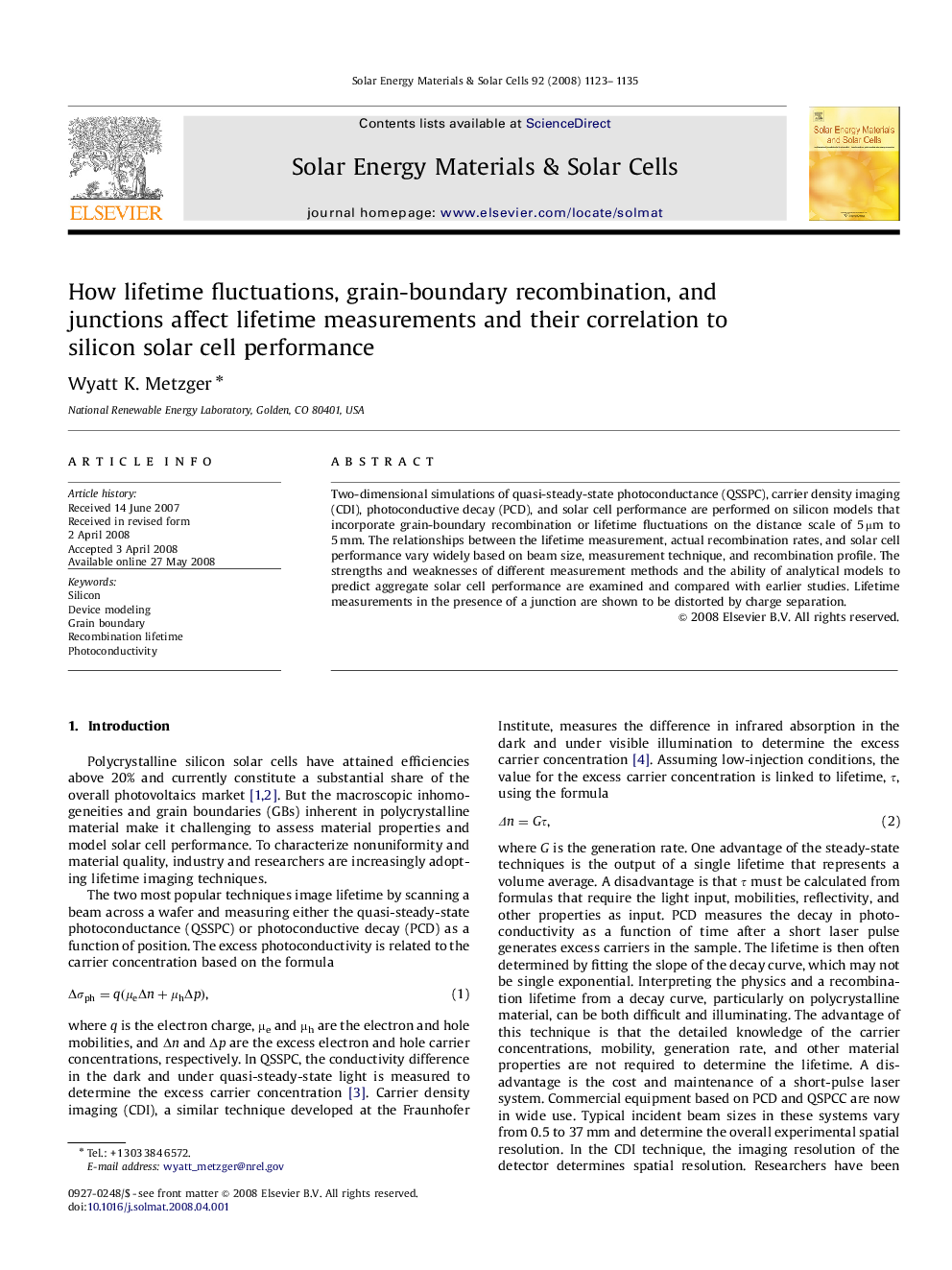| Article ID | Journal | Published Year | Pages | File Type |
|---|---|---|---|---|
| 80072 | Solar Energy Materials and Solar Cells | 2008 | 13 Pages |
Two-dimensional simulations of quasi-steady-state photoconductance (QSSPC), carrier density imaging (CDI), photoconductive decay (PCD), and solar cell performance are performed on silicon models that incorporate grain-boundary recombination or lifetime fluctuations on the distance scale of 5 μm to 5 mm. The relationships between the lifetime measurement, actual recombination rates, and solar cell performance vary widely based on beam size, measurement technique, and recombination profile. The strengths and weaknesses of different measurement methods and the ability of analytical models to predict aggregate solar cell performance are examined and compared with earlier studies. Lifetime measurements in the presence of a junction are shown to be distorted by charge separation.
